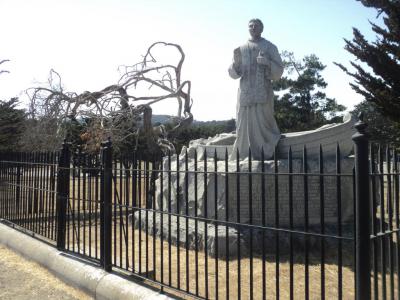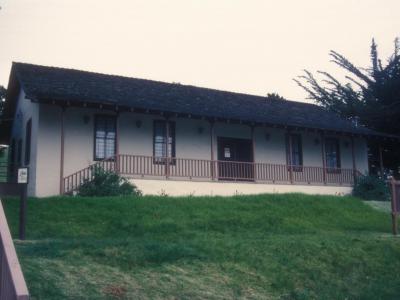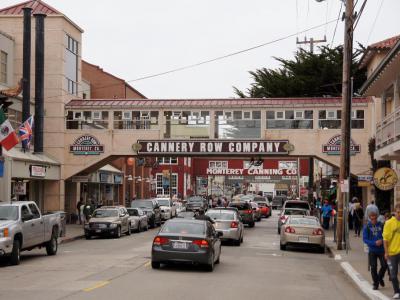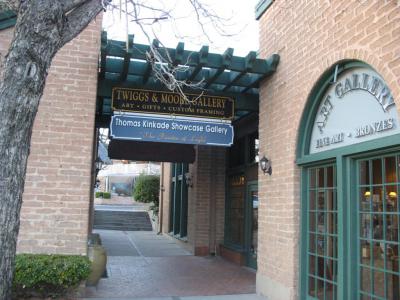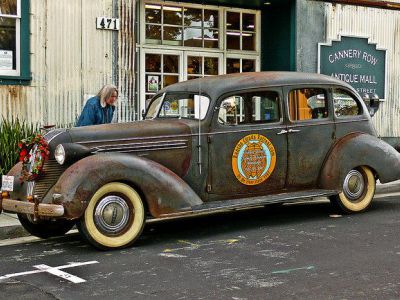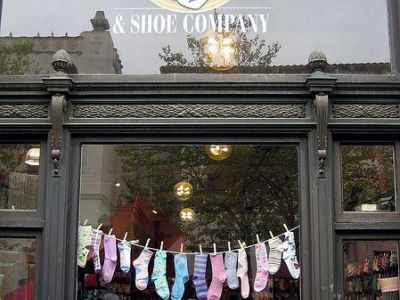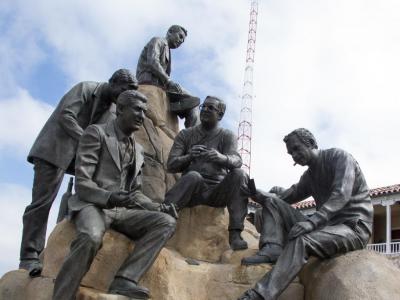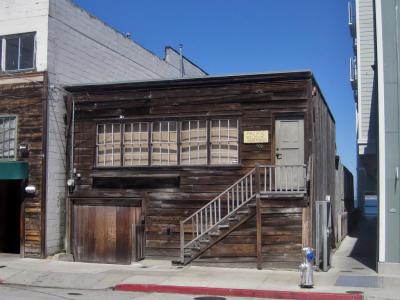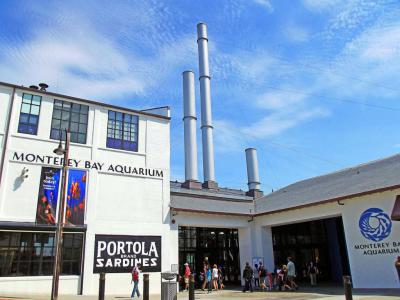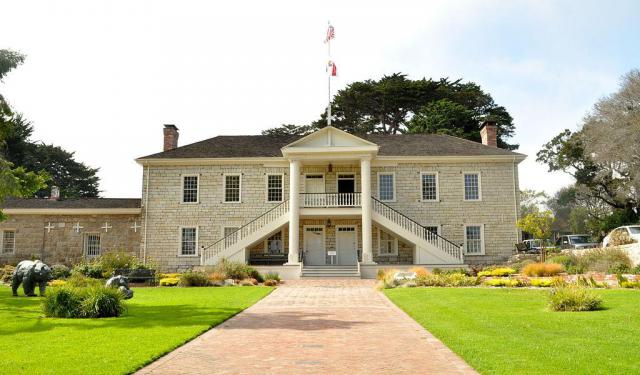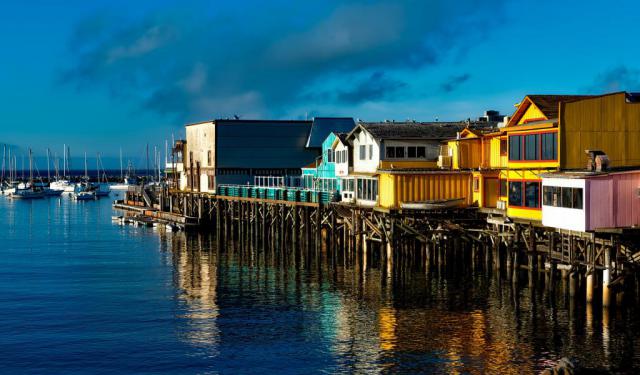Cannery Row Walking Tour (Self Guided), Monterey
Cannery Row – the waterfront street in Monterey, California – was once home to a number of sardine canning factories, the last of which closed down in 1973. The former nickname for Ocean View Avenue became the street's official name in January 1958 to honor John Steinbeck and his famous eponymous novel. In the novel's opening sentence, Steinbeck described Cannery Row as "a poem, a stink, a grating noise, a quality of light, a tone, a habit, a nostalgia, a dream."
Indeed, there are few destinations out there just as rich as Monterey’s fabled street in terms of historic, cultural and natural attractions. Here are some of the area's top locations worth visiting for a truly memorable experience:
Lower Presidio Historic Park – a huge, natural sanctuary, home to the Presidio of Monterey Museum complex recounting the official history of the city.
Cannery Row Street itself – once known as Ocean View Boulevard, a major tourist sight with numerous establishments located in the former cannery buildings, including Cannery Row Antique Mall – a treasure trove for antique lovers, with more than 150 dealers!
The Cannery Row Monument – located in Steinbeck Plaza, features bronze sculptures of some of the city's most noteworthy historic figures, including John Steinbeck himself.
Pacific Biological Laboratories – the building fictionalized as "Western Biological Laboratory" by Steinbeck in his Cannery Row novel.
Monterey Bay Aquarium – one of the best places to see and interact with marine life, featuring species from all parts of the world.
To soak up the unique culture and beauty of Monterey Bay and to experience firsthand the appeal of Cannery Row that makes it a major tourist destination, check out this self-guided walk!
Indeed, there are few destinations out there just as rich as Monterey’s fabled street in terms of historic, cultural and natural attractions. Here are some of the area's top locations worth visiting for a truly memorable experience:
Lower Presidio Historic Park – a huge, natural sanctuary, home to the Presidio of Monterey Museum complex recounting the official history of the city.
Cannery Row Street itself – once known as Ocean View Boulevard, a major tourist sight with numerous establishments located in the former cannery buildings, including Cannery Row Antique Mall – a treasure trove for antique lovers, with more than 150 dealers!
The Cannery Row Monument – located in Steinbeck Plaza, features bronze sculptures of some of the city's most noteworthy historic figures, including John Steinbeck himself.
Pacific Biological Laboratories – the building fictionalized as "Western Biological Laboratory" by Steinbeck in his Cannery Row novel.
Monterey Bay Aquarium – one of the best places to see and interact with marine life, featuring species from all parts of the world.
To soak up the unique culture and beauty of Monterey Bay and to experience firsthand the appeal of Cannery Row that makes it a major tourist destination, check out this self-guided walk!
How it works: Download the app "GPSmyCity: Walks in 1K+ Cities" from Apple App Store or Google Play Store to your mobile phone or tablet. The app turns your mobile device into a personal tour guide and its built-in GPS navigation functions guide you from one tour stop to next. The app works offline, so no data plan is needed when traveling abroad.
Cannery Row Walking Tour Map
Guide Name: Cannery Row Walking Tour
Guide Location: USA » Monterey (See other walking tours in Monterey)
Guide Type: Self-guided Walking Tour (Sightseeing)
# of Attractions: 9
Tour Duration: 1 Hour(s)
Travel Distance: 1.8 Km or 1.1 Miles
Author: DanaOffice
Sight(s) Featured in This Guide:
Guide Location: USA » Monterey (See other walking tours in Monterey)
Guide Type: Self-guided Walking Tour (Sightseeing)
# of Attractions: 9
Tour Duration: 1 Hour(s)
Travel Distance: 1.8 Km or 1.1 Miles
Author: DanaOffice
Sight(s) Featured in This Guide:
- Lower Presidio Historic Park
- Presidio of Monterey Museum
- Cannery Row Street
- Thomas Kinkade Gallery
- Cannery Row Antique Mall
- Sockshop
- The Cannery Row Monument
- Pacific Biological Laboratories
- Monterey Bay Aquarium
1) Lower Presidio Historic Park
Located right in the heart of Monterey, Lower Presidio Historic Park offers an outstanding view of both the bay and harbor. This park is a hidden treasure, highly valued for its historical significance. Renowned historians have even referred to it as the most important historical site on the American West Coast. The history encapsulated here covers a range of periods: from the Native American era, through the Spanish and Mexican times, to the arrival of American forces, the deployment of Buffalo Soldiers, and the establishment of the Defense Language Institute.
The park isn't as frequently visited as one might expect, possibly because its entrance, situated within a U.S. Army preserve, appears quite official. However, the park is open to the public and very welcoming. A visit here is highly recommended. At the top of the hill, you'll find the striking Sloat Monument, a large granite eagle, which has been a significant symbol throughout much of California's history.
As you walk up the path, you'll come across various signs that offer historical insights. The park also has a museum, open for free on weekends, with knowledgeable guides available. Near the Sloat Monument and the parking area is the Lower Presidio’s Harbor Trail. This short, accessible trail details the history of Monterey’s indigenous communities-the Esselen and Rumsien Ohlone-and includes the Bouchard Monument, dedicated to an Argentine Navy commander considered a rebellious pirate by Californians, as well as the Junipero Serra Monument.
The view from this location is truly breathtaking. On clear days or even when fog is rolling in, you can see sailboats on the sea and the vividly colored buildings of the wharf, creating a picturesque scene.
The park isn't as frequently visited as one might expect, possibly because its entrance, situated within a U.S. Army preserve, appears quite official. However, the park is open to the public and very welcoming. A visit here is highly recommended. At the top of the hill, you'll find the striking Sloat Monument, a large granite eagle, which has been a significant symbol throughout much of California's history.
As you walk up the path, you'll come across various signs that offer historical insights. The park also has a museum, open for free on weekends, with knowledgeable guides available. Near the Sloat Monument and the parking area is the Lower Presidio’s Harbor Trail. This short, accessible trail details the history of Monterey’s indigenous communities-the Esselen and Rumsien Ohlone-and includes the Bouchard Monument, dedicated to an Argentine Navy commander considered a rebellious pirate by Californians, as well as the Junipero Serra Monument.
The view from this location is truly breathtaking. On clear days or even when fog is rolling in, you can see sailboats on the sea and the vividly colored buildings of the wharf, creating a picturesque scene.
2) Presidio of Monterey Museum
The Museum of Monterey - Stanton Center, also known as the Monterey History & Maritime Museum, offers a fascinating glimpse into the history of Monterey and its surroundings, with a particular focus on its maritime connections. Admission is free, and the museum boasts an extensive collection of artifacts. Its permanent exhibitions cover various topics, including the tragic 1935 USS Macon disaster off Point Sur, the indigenous Ohlone and Rumsien tribes that once inhabited the region, the Spanish exploration of the California coast, and the thriving sardine industry in Monterey.
The museum's origins date back to 1971 when it was established as the Allen Knight Maritime Museum. Initially located in the basement of the Monterey Museum of Art, it primarily showcased the maritime-related collection of Allen Knight, who had a brief stint as a sailor in 1916 and had been collecting maritime artifacts and memorabilia throughout his life.
The idea for a new maritime museum was approved in 1982, but it took until 1991 to secure full funding. Construction on the current Maritime and History Museum, situated in Custom House Plaza, commenced on July 15, 1991, and the museum officially opened its doors on October 31, 1992. In 2016, the San Francisco Maritime National Park Association acquired the Allen Knight collection, adding to the museum's holdings.
The museum's exhibits guide visitors through Monterey's diverse military history, spanning from the indigenous era, which highlights the native populations in the region, to the Spanish and Mexican periods, and up to the present day. Given the significant role of the military in Monterey from 1902 to the present, the majority of the displays focus on the development of the Presidio as an army training base.
The museum's origins date back to 1971 when it was established as the Allen Knight Maritime Museum. Initially located in the basement of the Monterey Museum of Art, it primarily showcased the maritime-related collection of Allen Knight, who had a brief stint as a sailor in 1916 and had been collecting maritime artifacts and memorabilia throughout his life.
The idea for a new maritime museum was approved in 1982, but it took until 1991 to secure full funding. Construction on the current Maritime and History Museum, situated in Custom House Plaza, commenced on July 15, 1991, and the museum officially opened its doors on October 31, 1992. In 2016, the San Francisco Maritime National Park Association acquired the Allen Knight collection, adding to the museum's holdings.
The museum's exhibits guide visitors through Monterey's diverse military history, spanning from the indigenous era, which highlights the native populations in the region, to the Spanish and Mexican periods, and up to the present day. Given the significant role of the military in Monterey from 1902 to the present, the majority of the displays focus on the development of the Presidio as an army training base.
3) Cannery Row Street (must see)
Cannery Row, situated near Fisherman's Wharf, is a picturesque street with a rich history. Its name is derived from the once-operational sardine canning factories that have since ceased production. Today, the area is replete with a plethora of shops, restaurants, and bars.
This historic industrial district, located to the west of downtown Monterey, was home to several sardine canneries and packing houses from the 1920s until the 1950s. Unfortunately, the overfishing of sardines led to the collapse of the industry during that time. For decades, the neighborhood remained largely vacant until the late 1980s when the Monterey Bay Aquarium acquired the former Hovden Cannery and established its own facility there. This move breathed new life into the neighborhood, transforming it into the premier tourist destination on the Monterey Peninsula. Some remnants of the old canneries, which were destroyed by fires in the 1970s, can still be seen in the form of empty foundations along the oceanfront. A free shuttle service now connects downtown Monterey with the Aquarium, making it convenient for visitors.
Originally known as Ocean View Boulevard, Cannery Row was renamed in 1958 in honor of the renowned writer John Steinbeck, who authored a famous novel of the same name. Today, it has become a popular tourist attraction, with numerous businesses housed in the historic cannery buildings. Notable landmarks in this district include the Cannery Row Antique Mall, located within one of the most historically preserved cannery buildings accessible to the public. Other historic structures in the area encompass the Wing Chong Market, The American Tin Cannery (now a shopping mall), Doc Rickett's lab (adjacent to the aquarium and open to the public periodically), and some of the water tanks immortalized in Steinbeck's writings.
Cannery Row now stands as the historic cannery district, spanning from Foam Street to the oceanfront.
This historic industrial district, located to the west of downtown Monterey, was home to several sardine canneries and packing houses from the 1920s until the 1950s. Unfortunately, the overfishing of sardines led to the collapse of the industry during that time. For decades, the neighborhood remained largely vacant until the late 1980s when the Monterey Bay Aquarium acquired the former Hovden Cannery and established its own facility there. This move breathed new life into the neighborhood, transforming it into the premier tourist destination on the Monterey Peninsula. Some remnants of the old canneries, which were destroyed by fires in the 1970s, can still be seen in the form of empty foundations along the oceanfront. A free shuttle service now connects downtown Monterey with the Aquarium, making it convenient for visitors.
Originally known as Ocean View Boulevard, Cannery Row was renamed in 1958 in honor of the renowned writer John Steinbeck, who authored a famous novel of the same name. Today, it has become a popular tourist attraction, with numerous businesses housed in the historic cannery buildings. Notable landmarks in this district include the Cannery Row Antique Mall, located within one of the most historically preserved cannery buildings accessible to the public. Other historic structures in the area encompass the Wing Chong Market, The American Tin Cannery (now a shopping mall), Doc Rickett's lab (adjacent to the aquarium and open to the public periodically), and some of the water tanks immortalized in Steinbeck's writings.
Cannery Row now stands as the historic cannery district, spanning from Foam Street to the oceanfront.
4) Thomas Kinkade Gallery
The Thomas Kinkade Gallery in Monterey, is a captivating destination for art enthusiasts and admirers of Thomas Kinkade's work. Established in 1994, this gallery is strategically situated on Cannery Row, opposite the Monterey Plaza, reflecting Kinkade's deep-rooted connection to Monterey.
As you step into the gallery, you are immediately transported into a world that mirrors the essence of a grand mansion, offering a unique and personal experience. This layout is not just an artistic choice but a deliberate attempt to provide visitors with an intimate glimpse into Kinkade's life, house, and artistic vision.
The gallery takes pride in showcasing an extensive collection of art by Thomas Kinkade, renowned for his use of oils, detailed sketches, and picturesque landscapes that capture the essence of studio work. Alongside Kinkade's masterpieces, the gallery also features works by Blend Cota, Zac Kinkade, Marjolein Bastin, and other talented artists, making it a diverse and enriching experience for visitors.
One of the gallery's highlights is its vast collection of rare and sold-out Kinkade paintings, one of the largest in the USA. This collection draws both long-time fans and new admirers, offering an opportunity to explore Kinkade's legacy and impact on the art world.
Visiting the Thomas Kinkade Gallery in Monterey is not just about viewing art; it's an immersive experience that connects you to the artist's world. Whether you're a lifelong fan or newly acquainted with Kinkade's work, the gallery encourages a personal and up-close encounter with the art, making it a must-visit destination for anyone interested in exploring the depth and beauty of Thomas Kinkade's artistic journey.
As you step into the gallery, you are immediately transported into a world that mirrors the essence of a grand mansion, offering a unique and personal experience. This layout is not just an artistic choice but a deliberate attempt to provide visitors with an intimate glimpse into Kinkade's life, house, and artistic vision.
The gallery takes pride in showcasing an extensive collection of art by Thomas Kinkade, renowned for his use of oils, detailed sketches, and picturesque landscapes that capture the essence of studio work. Alongside Kinkade's masterpieces, the gallery also features works by Blend Cota, Zac Kinkade, Marjolein Bastin, and other talented artists, making it a diverse and enriching experience for visitors.
One of the gallery's highlights is its vast collection of rare and sold-out Kinkade paintings, one of the largest in the USA. This collection draws both long-time fans and new admirers, offering an opportunity to explore Kinkade's legacy and impact on the art world.
Visiting the Thomas Kinkade Gallery in Monterey is not just about viewing art; it's an immersive experience that connects you to the artist's world. Whether you're a lifelong fan or newly acquainted with Kinkade's work, the gallery encourages a personal and up-close encounter with the art, making it a must-visit destination for anyone interested in exploring the depth and beauty of Thomas Kinkade's artistic journey.
5) Cannery Row Antique Mall
The Cannery Row Antique Mall, situated on the Central Coast with views of Monterey Bay, stands as the largest establishment of its kind in the region. Occupying a historic edifice that dates back to the 1927 Steinbeck Era, originally a canning company, it retains much of its initial architecture and equipment.
Spanning a generous 21,000 square feet across two levels, the mall offers an extensive collection of antiques and collectibles, curated from over 150 dealers. It's a veritable haven for enthusiasts, featuring a diverse array of items including jewelry, books, vintage clothing, china, glassware, linens, home furnishings, toys, sports memorabilia, and seasonal decorations. The staff is known for their amiable service, assisting visitors in locating specific items.
With over 25 years of operation, the Cannery Row Antique Mall has earned several accolades, including being named “Antique Mall of the Year” in 1996. It has repeatedly been recognized by the “Monterey County Weekly” and the “Carmel Pine Cone” for its excellence in the antique business, and was also honored by the Professional Antique Mall Magazine.
Spanning a generous 21,000 square feet across two levels, the mall offers an extensive collection of antiques and collectibles, curated from over 150 dealers. It's a veritable haven for enthusiasts, featuring a diverse array of items including jewelry, books, vintage clothing, china, glassware, linens, home furnishings, toys, sports memorabilia, and seasonal decorations. The staff is known for their amiable service, assisting visitors in locating specific items.
With over 25 years of operation, the Cannery Row Antique Mall has earned several accolades, including being named “Antique Mall of the Year” in 1996. It has repeatedly been recognized by the “Monterey County Weekly” and the “Carmel Pine Cone” for its excellence in the antique business, and was also honored by the Professional Antique Mall Magazine.
6) Sockshop
Sockshop in Monterey, stands out as a vibrant and unique destination, particularly known for having the largest selection of socks and hosiery on the West Coast. This shop is a paradise for sock enthusiasts, offering a colorful and diverse range that is both functional and fun. Visitors to the Sockshop are immediately drawn to its eclectic collection, which includes socks adorned with the faces of famous people and replicas of art masterpieces, adding an artistic flair to everyday wear.
Beyond the visually striking designs, the Sockshop caters to a variety of needs. They offer therapeutic socks, ideal for those seeking comfort and support, as well as a range of sports socks designed for athletic activities. For those looking for something more relaxed, the shop also has a selection of leisure and casual socks, perfect for everyday use.
The Sockshop's appeal extends beyond personal use, as people often visit specifically to find unique souvenirs and gifts. The socks sold here make for memorable and distinctive presents, appreciated by friends and family for their originality and thoughtfulness. Additionally, the shop also offers a range of tights for women and various accessories, further broadening its appeal.
Beyond the visually striking designs, the Sockshop caters to a variety of needs. They offer therapeutic socks, ideal for those seeking comfort and support, as well as a range of sports socks designed for athletic activities. For those looking for something more relaxed, the shop also has a selection of leisure and casual socks, perfect for everyday use.
The Sockshop's appeal extends beyond personal use, as people often visit specifically to find unique souvenirs and gifts. The socks sold here make for memorable and distinctive presents, appreciated by friends and family for their originality and thoughtfulness. Additionally, the shop also offers a range of tights for women and various accessories, further broadening its appeal.
7) The Cannery Row Monument
The Cannery Row Monument in Steinbeck Plaza features bronze sculptures of some of the city's most noteworthy historical figures. These sculptures have an impressive background that includes views of Monterey Bay. When you see these statues, you will understand why so many visitors consider this sight a must-see.
These statues are of bronze, with the image of John Steinbeck standing out. One of the features also featured on the monument is Ed Ricketts, a marine biologist. In addition to being a known biologist in the area, Ricketts was also a close personal friend of Steinbeck's, making him an excellent addition to the monument.
Four of the other figures pictured on this monument include Ted Balestreri, Bert Cutino, Hary Davidian, and George Zarounian. These were local business owners who played a significant role in reviving Cannery Row, which has helped increase tourism to this part of the city. Steven Whyte was the sculpture responsible for creating this landmark.
These statues are of bronze, with the image of John Steinbeck standing out. One of the features also featured on the monument is Ed Ricketts, a marine biologist. In addition to being a known biologist in the area, Ricketts was also a close personal friend of Steinbeck's, making him an excellent addition to the monument.
Four of the other figures pictured on this monument include Ted Balestreri, Bert Cutino, Hary Davidian, and George Zarounian. These were local business owners who played a significant role in reviving Cannery Row, which has helped increase tourism to this part of the city. Steven Whyte was the sculpture responsible for creating this landmark.
8) Pacific Biological Laboratories
Pacific Biological Laboratories (PBL), a biological supply company, sold preserved marine animals and specialized microscope slides to educational institutions, museums, and research centers. Located in Monterey's Cannery Row, California, PBL became famous through John Steinbeck's novel "Cannery Row", where he fictionalized the lab as "Western Biological Laboratory" and included a character inspired by PBL's co-founder, Ed Ricketts. After a fire in 1936, Steinbeck invested in PBL, acquiring half of its shares.
In 1949, following Ricketts's death, the lab's building was sold to Yock Yee, a local store owner. Harlan Watkins, a high school literature teacher and jazz fan, rented and later bought the building. From 1958, after Watkins moved to Europe, his friends, including notable artists and writers from Monterey, purchased and used the building as a club venue. This group played a role in initiating the Monterey Jazz Festival, first held in 1958.
The club sold the building to the City of Monterey in 1993 for $170,000. The Cannery Row Foundation restored it in 1998, receiving the Governor's Award for Historic Preservation. In 1997, on Ed Ricketts' 100th birth anniversary, a commemorative plaque was placed at the site by local historical societies. The building is listed on the National Register of Historic Places and is open for monthly public tours.
In 1949, following Ricketts's death, the lab's building was sold to Yock Yee, a local store owner. Harlan Watkins, a high school literature teacher and jazz fan, rented and later bought the building. From 1958, after Watkins moved to Europe, his friends, including notable artists and writers from Monterey, purchased and used the building as a club venue. This group played a role in initiating the Monterey Jazz Festival, first held in 1958.
The club sold the building to the City of Monterey in 1993 for $170,000. The Cannery Row Foundation restored it in 1998, receiving the Governor's Award for Historic Preservation. In 1997, on Ed Ricketts' 100th birth anniversary, a commemorative plaque was placed at the site by local historical societies. The building is listed on the National Register of Historic Places and is open for monthly public tours.
9) Monterey Bay Aquarium (must see)
The Monterey Bay Aquarium is one of the best places to see and interact with marine life. The aquarium has species that represent marine life from all areas of the world, not just California. These species reside in habitats that are as close to their natural surroundings as possible, from dunes to kelp forests.
Watch the hilarious antics of the African penguins and their young. See some jellyfish and interact with stingrays. Watch sharks swimming in their tanks among other fish and see what the sea otters are up to. There is an animal species here to amuse everyone. You can even watch the animals being fed and interacting with the keepers.
You can also take part in educational programs that highlight marine life and ocean health. These opportunities allow you to learn more about how life in the ocean impacts all of us. Everything that you can see here will give you a greater appreciation for these species.
Watch the hilarious antics of the African penguins and their young. See some jellyfish and interact with stingrays. Watch sharks swimming in their tanks among other fish and see what the sea otters are up to. There is an animal species here to amuse everyone. You can even watch the animals being fed and interacting with the keepers.
You can also take part in educational programs that highlight marine life and ocean health. These opportunities allow you to learn more about how life in the ocean impacts all of us. Everything that you can see here will give you a greater appreciation for these species.
Walking Tours in Monterey, California
Create Your Own Walk in Monterey
Creating your own self-guided walk in Monterey is easy and fun. Choose the city attractions that you want to see and a walk route map will be created just for you. You can even set your hotel as the start point of the walk.
Monterey State Historic Park Walk
Monterey State Historic Park is a National Landmark and a part of the Monterey Old Town Historic District. Found on the grounds here are a group of significant old-time houses that once made up California's earliest capital and were the site of the state's first constitutional convention. Today these buildings retain their rich heritage, preserving an important part of Californian as... view more
Tour Duration: 1 Hour(s)
Travel Distance: 1.9 Km or 1.2 Miles
Tour Duration: 1 Hour(s)
Travel Distance: 1.9 Km or 1.2 Miles
Monterey Introduction Walking Tour
Monterey is one of California's oldest cities, having been settled since 1770. The Spanish and Mexican governments both used the city as a capital for Alta California. Monterey offered many important firsts for California during this era, including a newspaper and printing press, public school, library, and theater.
This city was the location for the first constitutional convention in... view more
Tour Duration: 2 Hour(s)
Travel Distance: 3.8 Km or 2.4 Miles
This city was the location for the first constitutional convention in... view more
Tour Duration: 2 Hour(s)
Travel Distance: 3.8 Km or 2.4 Miles
The Most Popular Cities
/ view all



